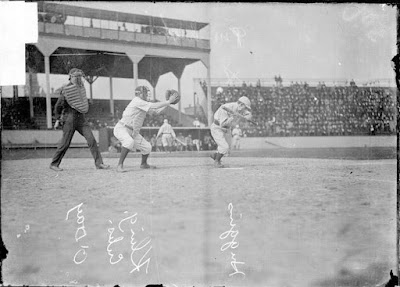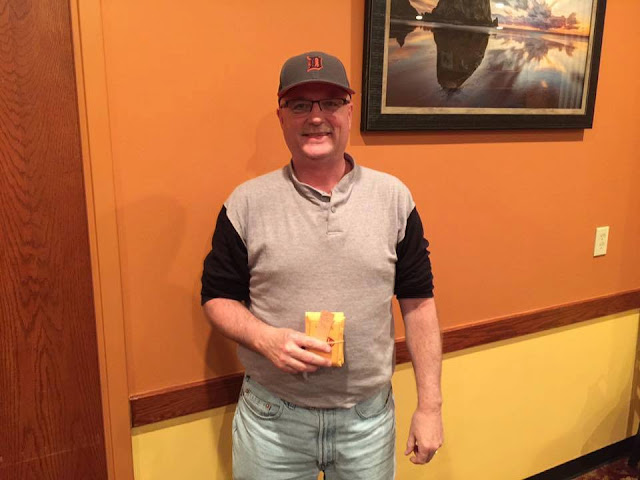As usual, the Michigan tournament produced some fantastic games, great sportsmanship, fostered new friendships, reunited long-time APBA friends, and was an enormous success by any measure.
This regional APBA tournament is a "can't miss" on the APBA circuit. The Michigan attracts the largest number of managers for a regional tournament, and may even draw more than the National, at least it is looking like it may for 2018 with 42 already signed up at the time the blog went live.
Why such a high number of managers? A gracious and well organized host, interesting team selection, and a great community. Pastor Rick Zawadzki deserves a huge "Thank you" for all he does for our group that travels to Michigan and all he does for APBA: a class act all the way.
Below is a photo of my table, the Ty Cobb division. My 1911 Naps pitched and hit their way into last place! It must be that the baseball gods were upset that I did not manage a Twins team, or at least a Senators team in this tourney. There are too many managers to name in these action photos, and if you want a copy, please just click it and save it. Rolling pits, cards, die cups, boards, soda, score sheets, it's all there.
Same location as the last three years at Gene Davis Steaks Eatery in Jackson, Michigan.
Below, the east-coast table where former Michigan champs and soon-to-be Michigan winners prowled the dice pits and towers. That's a tough table of great guys.
Lots of bunting and calling for a "hit-and-run" going on when I snapped this shot. Not many arms up in the bullpen either as in the Deadball era you tend to ride that starting horse until he is grade reduced to dust.
Below, the group shot.
Congratulations to the Champ! Aaron Radinski took his 1902 Pittsburg Pirates all the way! 8-3 overall record. Well done.
Consolation Bracket champ - Dick Butler! Managed his 1908 Cubs through a hard fought 9-3 for the day.


































